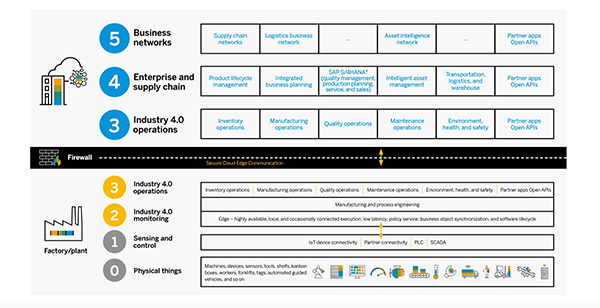OEMs must account for energy expended during manufacturing, assembly and shipping of thousands of components.
By Hagen Huebach
The explosive growth of electric-vehicle (EV) sales is a welcome development for the climate and the environment. These machines are marvelously efficient: Fully three quarters of an EV’s input energy goes to turning the wheels. Compare that to an internal-combustion engine (ICE) in which heat, drivetrain friction, and other losses waste all but 12% to 30% of the energy from the fossil fuels they burn. The Rocky Mountain Institute has calculated that just 0.5% of an ICE’s fuel energy actually propels the weight of the passenger forward.
Yet as those in the auto business are well aware, even a fully electric fleet won’t be enough to position the industry to do its fair share in limiting global warming to 1.5 degrees Celsius above preindustrial levels. True, between 65% and 80% of the lifetime emissions associated with the production and operation of an ICE-powered car or truck comes from fuel going up in smoke (or the production, refining, and transport of that fuel.)
But what about the rest of those emissions – in particular, those resulting from the energy embodied in the vehicle’s many materials (including an EV’s batteries) and those generated during the manufacturing, assembly, and shipping of the thousands of components that make up a modern automobile?
We as a civilization must cut net global greenhouse gas emissions to zero by midcentury. Countries including France, Sweden, and the United Kingdom have enshrined this goal into law Germany is well on its way; the Biden Administration, rejoining the Paris Agreement, has committed the United States to the net-zero 2050 goal. Some of the auto industry’s biggest players are already on board, as exemplified by Ford, GM, and Volkswagen’s net-zero pledges. EVs, as helpful as they will be in reducing carbon emissions, won’t drive the auto industry to net-zero manufacturing. What will?
You’re probably familiar with long-term answers: vast amounts of renewable energy and the relocation of energy-intensive processes such as aluminum smelting to places where renewables are bountiful; less carbon-intensive materials; recyclable and reusable components from roof to tires; and greater production efficiencies, to name a few.
All of this, though, will be predicated on data. A precise accounting for energy inputs and GHG outputs is implicit in the very term “net-zero.” With respect to auto manufacturing, that accounting means both expanding and extending the data the industry and its many suppliers already run on.

By “expanding,” I mean developing entirely new ledgers to track energy use, carbon, and other sustainability-related values within a business. This is, in fact, the easy part. Enterprise resource planning systems are all about tracking, reporting, and forecasting based on granular data from all corners of an organization. SAP is already working with auto industry partners to develop the functionality that will embed energy and carbon tracking as deeply into an organization’s information architecture as financial and materials tracking is today.
The bigger challenge is the “extending” of data. No automaker can go carbon neutral in isolation. Back to those EV batteries: Let’s say an OEM sources them from several Tier 1 suppliers, each of which sources from several Tier 2s and on down the line. How does one account for the carbon emissions up and down the chain? And, looking ahead, how can an OEM advocate for concrete emissions improvements, materials improvements, or recyclability improvements along the supply chain if that OEM doesn’t know where in that supply chain the inefficiencies that bring added emissions are?
Further, how might OEMs collaborate to identify and then solve pressing, industry-wide, societally relevant problems whose solutions can benefit competitors, consumers, and the environment – such as, say, identifying and establishing, through their formidable purchasing power, major markets for recycled lithium and rare earthers in EV batteries?
These sorts of challenges were what led to the creation of the Catena-X Automotive Network, a German government-backed consortium that is now working to extend data in a secure, transparent, and reliable way throughout the auto industry value chain. It’s a cloud-based ecosystem open to all companies in the European automotive industry and their global partners, users, and suppliers. SAP is playing a central role in building it, and I’m on the board. Catena-X is about much more that carbon accounting, but it will enable exactly the sort of cross-company data sharing that will make possible truly comprehensive carbon accounting and the efficiency and quality improvements that will emerge with that accounting.
My hope is that the example of Catena-X spurs similar collaboration throughout the global auto industry.
In enabling the EV revolution, the auto industry is already playing a vital role in moving civilization toward carbon neutrality. Getting to the finish line will take a combination of expanding today’s auto-industry data models and extending them to enable the value-chain-wide collaboration need to power the industry’s transition to net-zero.

Hagen Heubach is Vice President and Global head of the automotive industry business unit at SAP SE, with responsibility for SAP’s automotive solution portfolio as well as the company’s strategy on future mobility and new business models.
In this episode, I sat down with Beejan Giga, Director | Partner and Caleb Emerson, Senior Results Manager at Carpedia International. We discussed the insights behind their recent Industry Today article, “Thinking Three Moves Ahead” and together we explored how manufacturers can plan more strategically, align with their suppliers, and build the operational discipline needed to support intentional, sustainable growth. It was a conversation packed with practical perspectives on navigating a fast-changing industry landscape.